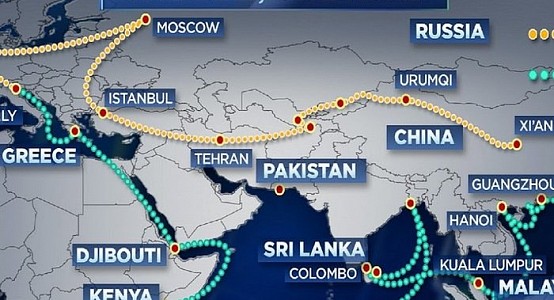Belt and Road initiative projects to be financed by all states involved, experts say

Beijing. May 29. Silkroadnews - The aim of Belt and Road (B&R) initiative is to involve many countries, investors in a wide variety of industries and financial institutions expected to play a more significant role in financing B&R projects, the Global Times reports.
Five years have passed since China first proposed the B&R initiative in Kazakhstan, since then, China has seen an increase in trade and investment with countries and regions along the routes of the initiative.
For example, the new outbound investments in 52 countries along the routes have grown 22.4% year-on-year in the first quarter of 2018, reaching $3.61 billion, the official data shows.
However, there have been complaints about China’s problems with financing of B&R projects.
The Chinese government has promised to invest $1 trillion in B&R infrastructure. However, the financing of transport projects amounted to $90 billion in the period from 2014 to 2017, the Asia Times reports referring to the data of the Center for Strategic and International Studies (CSIS). The CSIS experts also noted in an earlier study, China’s promise to invest $1 trillion cannot be fulfilled for several years.
It would be wrong to assume that the Chinese government will be the only one to take responsibility for B&R investments, the agency quoted Huang Rihan, executive director of the B&R Institute at the Center for China and Globalization, saying.
“B&R projects follow rules of wide consultation and open negotiations, which aim to bring joint benefits for all parties involved,” he noted.
Projects that should become profitable not only for Chinese investors, but also for local operators, cannot be subsidized by Chinese government alone, said Huang, as the projects in case are characterized as market-oriented ones.
In a report released in July 2017 the Global infrastructure hub, supported by the G20, announced that the cost of repairing infrastructure gaps would reach $94 trillion by 2040, and $3.7 trillion would be invested in infrastructure each year.
“Considering this huge gap worldwide, it is a common situation for countries to face financing shortages in infrastructure projects. The B&R aims to expand financing channels for infrastructure projects and bring in more diversified investors,” Xiang Junyong, an expert at the Chongyang Institute for Financial Studies at Renmin University of China, said.
The Silk Road Fund (SRF) and multilateral financial institutions, such as the Asian Infrastructure Investment Bank and the New Development Bank, are currently the main sources of funding for B&R projects, he added. Besides, there are some Chinese companies have been seeking more funding on their own. For example, the State Grid has issued bonds to support its energy projects in Brazil.
Nevertheless, the funding mechanism, supported by various players, needs further improvement, Xiang notes. For example, the Asian Financial Cooperation Association should play a more active role in attracting various investors to B& R projects such as commercial banks and insurance companies, and certain funds within the SRF should also be reoriented to areas where the need for financing is greater, - he said.
In addition, many countries along the initiative route have significant debts, which weakens the prospects for increasing the volume of funds.


